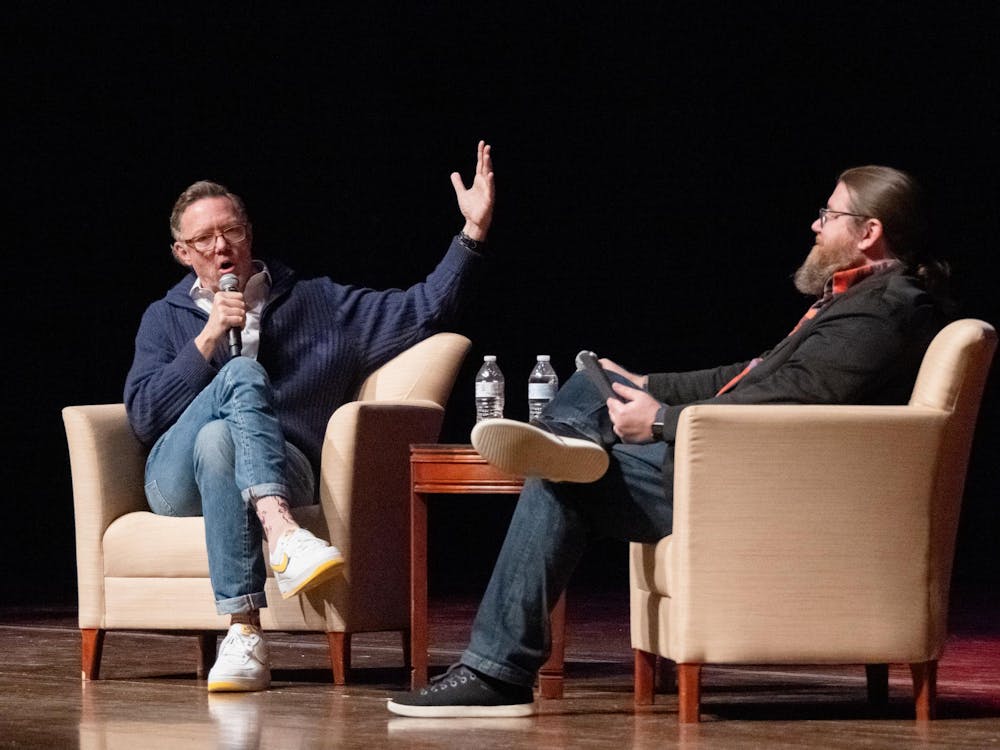Miami's winter break is long, longer than the breaks most major universities in Ohio give. As the days of the month-and-a-half long holiday tick by, it's easy to settle into new routines at home or abroad. Whether engaged in arctic activities, relaxing by a roaring fire or jetting off to various locales around the world, many Miamians leave Oxford mentally as well as physically for six weeks.
Once the semester rolls around again and it's time to get back into the swing of campus life, some student organizations find it difficult to pick up where they left off nearly two months prior.
Rachael Steed is the president of Miami University Fashion and Design (MUFD), one of Miami's largest and most active student organizations. Although she and her team stay in contact over J-term, she says that coming back to campus can still be a challenge.
"It's hard to pick back up," Steed said. "Before break, everyone is on a roll, motivated and really in the groove. But on break, they're in break mode, and we don't want to overwhelm them with too many things to do. So once we're back, getting motivated again and getting excited for our upcoming show does take some time."
Steed believes that because MUFD has over 450 members and several committees, getting the gears turning after break would be even more difficult if the teams didn't stay in contact.
"We try to stay active and keep working over break," Steed said. "Because we try and maintain a little bit of contact with our directors and did our monthly planning dashboard over J-term, we weren't as unfocused as we might have been otherwise."
The same can be said for Miami's Associated Student Government (ASG). Gaby Meissner, Farmer School of Business senator for ASG, says members continue their work throughout the long break.
"Over J-term, a lot of people work within their committees on various initiatives," Meissner said. "They come up with a lot of legislation and hard work that is then addressed once we return from break."
Meissner and Steed agree that communication over break is the key to ensuring a smooth transition back into business when classes resume. However, not all student organization leaders seem to share this philosophy.
Tori Jones, president of the Miami University Taiko Group, an ensemble that practices the traditional Japanese art of Taiko drumming, said she doesn't necessarily need to maintain contact with the club members over break.
"For us, practice just continues as normal," Jones said. "While there are some things I take care of organization-wise, there isn't much else that needs to be done."
Because Taiko drumming is so physical, Jones said that muscle memory is a big help in getting things going again.
Enjoy what you're reading?
Signup for our newsletter
"It can be hard to get focused again after the break," she said. "But after a few run throughs of our song and remembering 'Oh, I need to do this,' or 'Oops, I shouldn't do that weird thing with my arm,' it all comes together after a practice or so."
Jones went on to say that she feels larger student organizations might have a harder time acclimating to their activities, and that they rely more on effective and organized leadership.
Meissner, Jones and Steed have different opinions on how student organizations can make the transition from break as smooth as possible.
"I think it's important to get going as quickly as possible," Jones said. "It's easy to fall into the mindset of 'Hey, I haven't seen you in so long,' and socialize. If you get down to it as soon as you get back, it makes things easier."
Meanwhile, Meissner thinks that J-term is a prime time to recruit new members and fill any gaps left in an organization's roster.
"To avoid having to recruit so heavily in the spring semester, I think we should start recruitment over J-term," Meissner said. "Because a lot of students stay at home and don't take classes, there's a lull in activity, and in this lull, a lot of students say 'Oh, I want to take a bigger course load,' or 'I want to do more extracurriculars,' and that new ambition is something I think student organizations can help out with."
Steed stuck to her guns, touting communication as the most important factor for an easy transition.
"Touching base is so important," Steed said. "Last year, we had zero tasks over break, which is great because it lets you really relax, but it then took us an entire week to get back into the groove of things."
For the 739 different student organizations on campus, the beginning of spring semester is an undoubtedly busy time. But by the same token, it's also a time of activity and excitement; an entirely new semester full of opportunities. Miami's HUB web page provides information on the various different clubs and groups on campus for any student looking to get into the extracurricular swing this spring.
headledd@miamioh.edu




